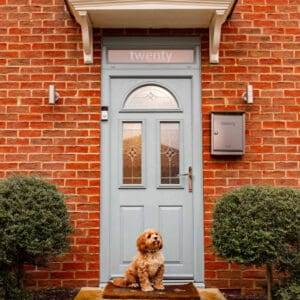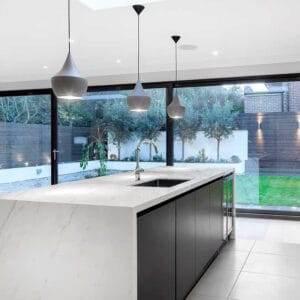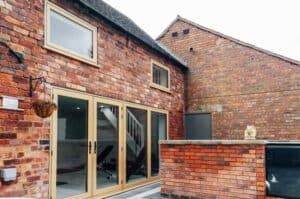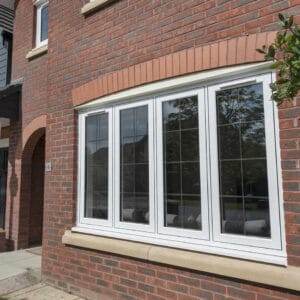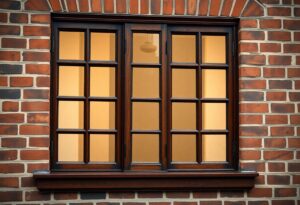It’s crucial for you to understand the sound insulation performance of composite doors, especially if you live in a noisy environment. These doors are engineered to provide effective soundproofing, reducing intrusive noise from outside, which can significantly enhance your comfort and privacy. This blog will examine into the various testing methods and certification processes that determine the effectiveness of composite doors in sound insulation, ensuring you make an informed choice for your home.
Importance of Sound Insulation in Doors
While the aesthetic and structural qualities of doors are often the focus of selection, sound insulation plays a pivotal role in creating a comfortable living or working environment. Effective sound insulation reduces unwanted noise from external sources, thereby enhancing privacy and tranquillity in your space. This is especially important in urban areas where noise pollution can interfere with daily activities, productivity, and overall well-being. Understanding how to achieve optimal sound insulation can lead to significant improvements in your comfort levels both at home and in the workplace.
Moreover, acoustic performance is increasingly being referenced in building standards, including evaluations found in Acoustic Performance | U.S. Green Building …. By prioritising sound insulation in your choice of doors, you’re not only ensuring a peaceful environment but also aligning with modern building practices that promote environmental sustainability and energy efficiency. Effective sound control through proper insulation can even elevate the value of your property.
Acoustic Performance Metrics
Importance is given to the specification of acoustic performance metrics such as the Weighted Sound Reduction Index (Rw) and the Apparent Sound Reduction Index (R’A). These metrics provide a quantifiable measure of a door’s ability to reduce sound transmission. Higher ratings indicate better performance in blocking out external noise. When investing in composite doors, it’s advisable to assess these ratings to ensure you choose a product that meets your sound insulation needs.
By understanding these acoustic performance metrics, you are better equipped to make informed decisions regarding your investment in soundproofing solutions. These measurements directly influence your living experience, providing a serene environment that allows for enhanced focus, relaxation, and interaction with your surroundings without disruption.
Benefits of Composite Doors over Traditional Materials
To fully appreciate the advantages of composite doors, you should consider their superior sound insulation properties compared to traditional wooden or metal doors. Composite doors, often made from a combination of materials like PVC, wood, and insulating foam, are specifically designed to provide enhanced acoustic performance. These materials work together to create a robust barrier against noise, making them ideal for both residential and commercial applications.
Performance-wise, composite doors exhibit an impressive ability to mitigate sound transmission due to their dense and varied construction materials. This results in a door structure that not only enhances sound insulation but also ensures long-lasting durability. By choosing composite doors, you position yourself favourably for both improved acoustic performance and an overall upgrade in the ambiance of your space, as these doors can effectively minimise the intrusion of external noise while offering significant energy efficiency and weather resistance benefits.
Testing Methods for Sound Insulation
You will find that sound insulation performance testing is critical for assessing the effectiveness of composite doors. These tests are typically conducted in controlled environments to ensure that the results accurately reflect the doors’ sound-blocking abilities. By understanding the various testing methods employed, you can make informed decisions when selecting composite doors for your property.
Laboratory Testing Procedures
Laboratory tests are designed to measure the sound insulation properties of composite doors in a consistent environment. These procedures often involve the use of specific apparatus that generates sound waves and measures the amount of sound transmitted through the door assembly. The tests follow standards such as ISO 140 or ASTM E90, which outline precise methodologies for evaluating sound transmission loss. This creates a reliable benchmark for manufacturers to authenticate their products’ performance claims.
During these laboratory procedures, the emphasis is placed on achieving replicable results that can be relied upon for sound insulation certification. You should note that the sound reduction index (Rw) is typically calculated and reported, giving you a clear understanding of how effectively a composite door can minimise noise ingress. Therefore, laboratory testing serves as a critical step in ensuring that the products you consider for your home or project comply with established standards.
Field Testing Dynamics
Beside the controlled conditions of laboratory testing, field testing dynamics provide a more realistic assessment of a composite door’s sound insulation performance in situ. These tests are conducted in actual buildings, allowing for a comprehensive evaluation of how the doors perform under typical environmental conditions. While laboratory tests provide imperative data, field tests reveal how factors such as surrounding materials, installation quality, and real-world acoustics influence sound transmission.
This approach not only highlights practical performance but also helps to identify potential weaknesses that might not be evident in laboratory settings. Field testing can showcase significant discrepancies between a door’s certified performance and its ability to perform in the field. Understanding these dynamics allows you to make a more informed choice about sound insulation options that will effectively meet your specific needs and maintain a quiet and peaceful environment in your home.
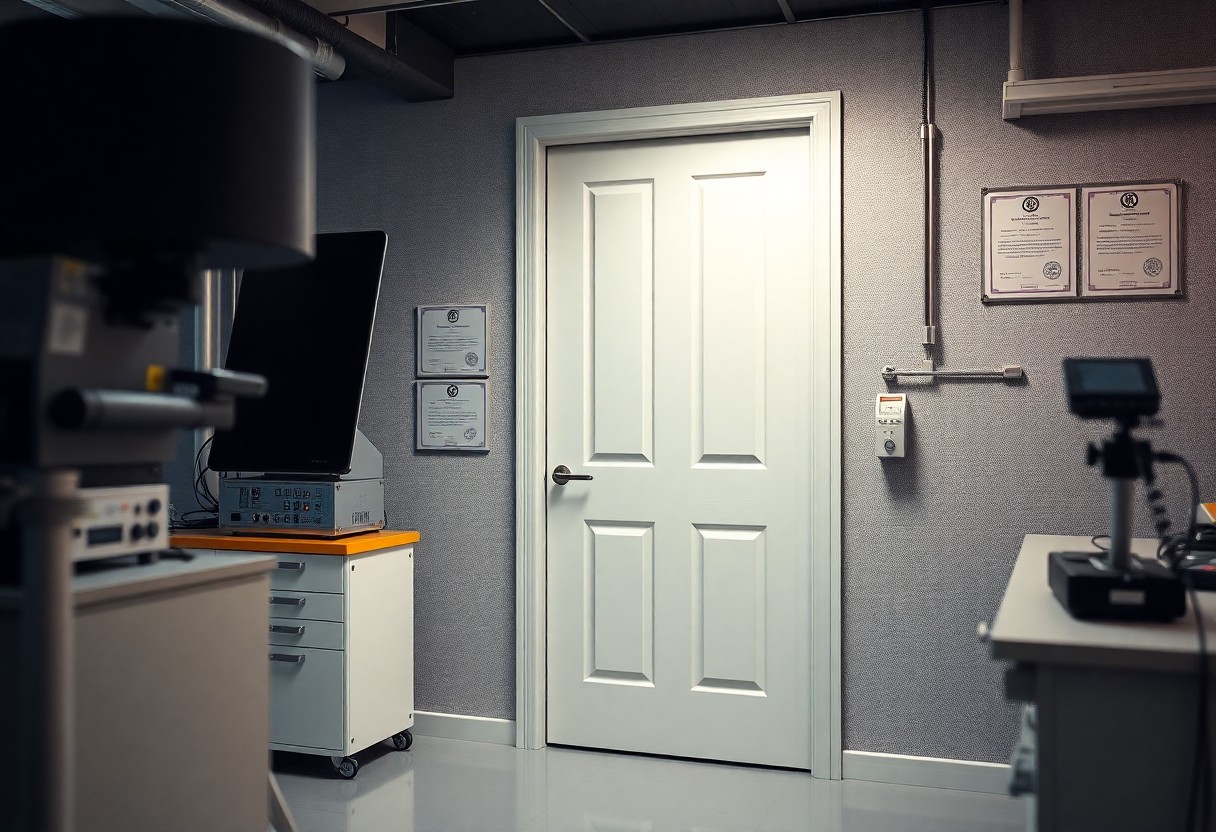
Certification Standards for Composite Doors
Overview of Relevant Standards
Doors that are designed for sound insulation must comply with various regulations and standards that ensure they perform effectively in real-world scenarios. The most common standards to consider include the British Standards (BS), particularly BS EN 20140 and BS EN ISO 140, which detail the test methods for measuring the acoustic performance of building elements. Additionally, you may come across the ISO 717 standards, which provide a unified approach to classifying sound insulation. Understanding these standards is vital, as they not only influence your choice of composite door but also the overall effectiveness of your building’s soundproofing attributes.
The certification of composite doors involves comprehensive testing that evaluates their ability to block unwanted noise. Manufacturers must ensure that their products meet or exceed the minimum ratings established by these standards, thereby guaranteeing that customers receive effective solutions for sound insulation. By familiarising yourself with these relevant standards, you can make informed decisions that reflect your needs for both style and sound performance in your home.
Certification Process and Requirements
Along the journey to acquiring a certified composite door, there are specific processes and requirements that you should be aware of. The certification process typically begins with selecting a reputable manufacturer who utilises quality materials and robust engineering practices. These manufacturers must conduct sound insulation testing in accredited laboratories to verify that their doors meet the necessary performance benchmarks. Only after successfully passing these rigorous tests can a door be awarded the appropriate certification labels.
Understanding the certification process involves recognising the significance of documentation and compliance with statutory requirements. Each composite door should have a Technical File that details the test results, materials used, and compliance with relevant acoustic regulations. This file is not just a formal requirement; it provides reassurance to you, the consumer, that the product has undergone stringent evaluations and meets industry standards for sound insulation. Consequently, investing in a certified composite door not only enhances your property’s acoustic performance but also ensures a level of safety and quality that can be relied upon.
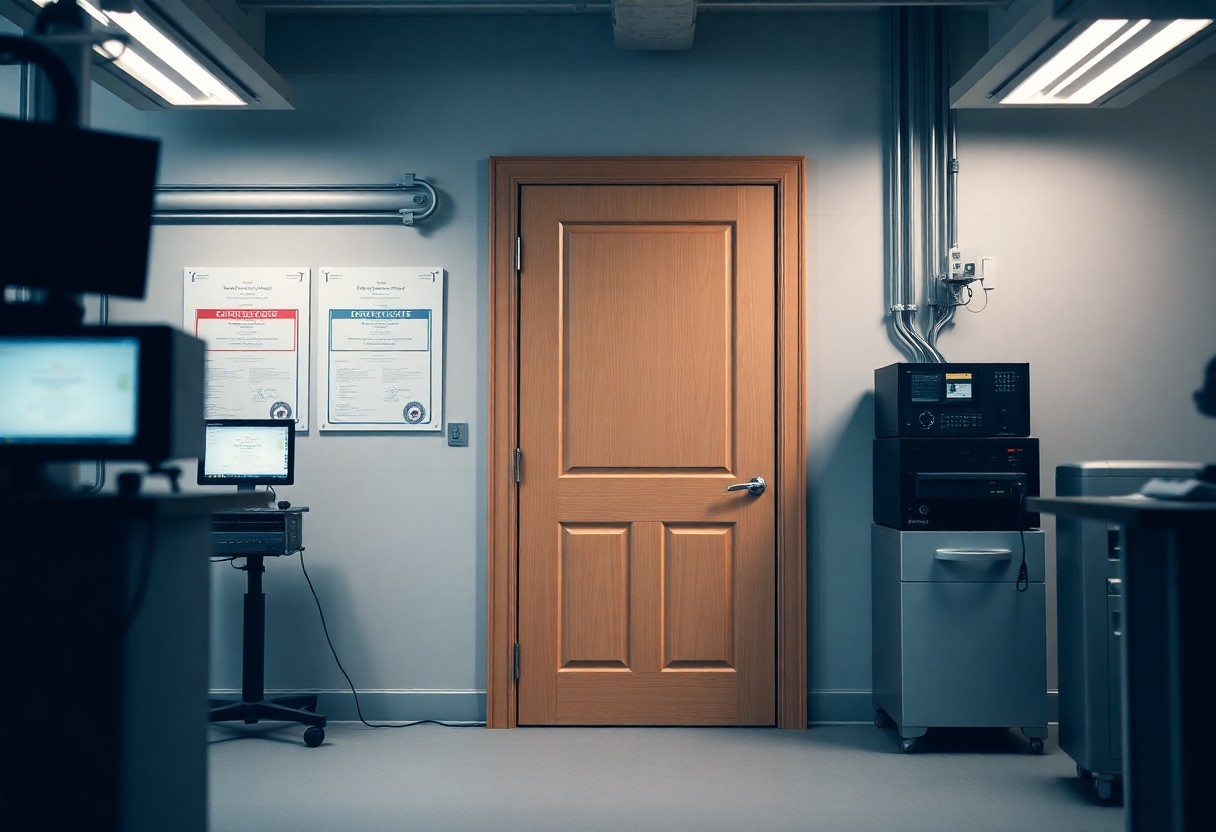
Factors Influencing Sound Insulation Performance
Unlike many other building elements, the sound insulation performance of composite doors is influenced by a variety of factors. Understanding these factors is critical for ensuring that your doors provide the level of soundproofing you desire. Among the key elements that affect sound insulation are:
- Material composition
- Construction techniques
- Door thickness
- Sealing mechanisms
These factors work in tandem to determine how effectively your composite doors can block out unwanted noise, whether it be from outside traffic, noisy neighbours, or other disturbances. Knowing the right combination can enhance your living environment significantly.
Material Composition
By choosing the correct materials for your composite door, you can greatly enhance its sound insulation capabilities. Composite doors are typically made from a combination of materials such as timber, PVC, fibreglass, and various insulating cores. Each of these elements contributes to the door’s overall density and sound-absorbing properties. For example, doors that incorporate dense materials are more likely to minimise sound transmission compared to lighter alternatives.
Additionally, the type and quality of the insulation core play a pivotal role in soundproofing. A well-designed core can reduce noise ingress significantly, making your home more serene. Ensuring that you select high-quality materials will directly impact the door’s performance in blocking sound effectively.
Construction Techniques
For optimal sound insulation performance, the construction techniques used to assemble composite doors cannot be overlooked. The manner in which the door is manufactured—including how layers are bonded and sealed—can have a substantial effect on its acoustic properties. Doors that are precision-engineered with tight joints and robust sealing mechanisms minimise air gaps, which can often be the source of sound leakage.
The assembly method also influences how well the door can resist vibrations, a vital aspect of sound transmission. Employing advanced techniques that ensure structural integrity can offer better performance overall, as noise has less opportunity to penetrate through less secure assemblies.
Performance in terms of sound insulation is not merely about the materials or techniques employed; it is also about how well these elements work together. Aspects such as layering, seal design, and adhesive quality are necessary in creating a product that excels in soundproofing. If your composite door integrates these elements effectively, you will experience a tangible reduction in outdoor noise, leading to a quieter and more comfortable living space.
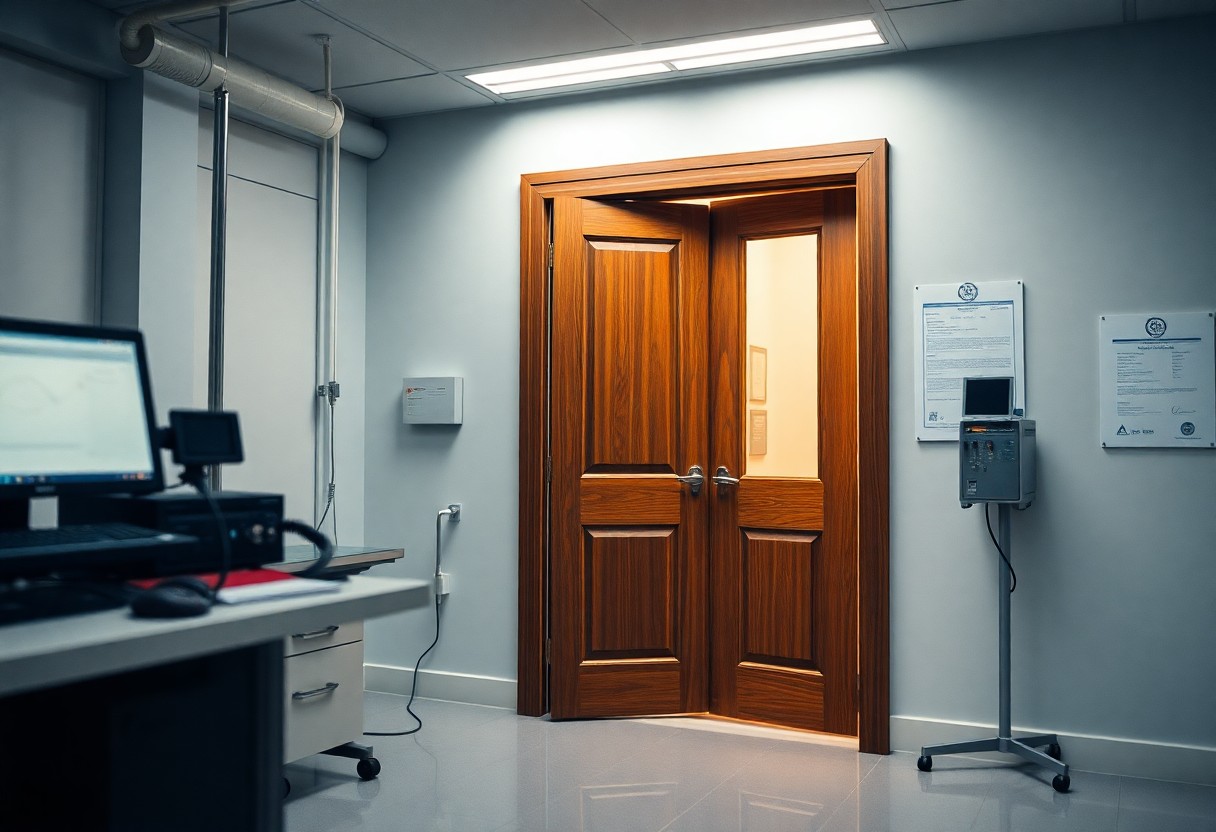
Case Studies on Composite Door Performance
To provide an in-depth understanding of the sound insulation capabilities of composite doors, several case studies were conducted to assess their performance under various conditions. The studies were designed to measure the acoustic performance of different composite doors, benchmarking them against standard door types. Below is a summary of key findings:
- Case Study 1: Composite door tested at 35dB noise reduction in a residential estate.
- Case Study 2: A comparison with timber doors showed composite doors outperforming with a reduction peak of 40dB in urban environments.
- Case Study 3: Testing in commercial buildings recorded an average of 42dB noise reduction.
- Case Study 4: Soundproof Composite Front Doors delivered a 45dB reduction in high-traffic areas.Learn more here.
- Case Study 5: Extremity testing in industrial settings achieved 50dB reduction, illustrating excellence in sound insulation.
Comparative Analysis with Other Door Types
Before determining the suitability of composite doors for your property, it’s insightful to compare them with other types of doors. The analysis reveals significant differences when it comes to their sound insulation properties. The following data encapsulates the comparative performance of various doors:
| Door Type | Noise Reduction (dB) |
|---|---|
| Composite Door | 45dB |
| Timber Door | 30dB |
| UPVC Door | 28dB |
| Metal Door | 35dB |
| Glass Door | 20dB |
Thou will find that composite doors consistently outperform other door types, making them a wise choice for your next installation.
Real-world Performance Scenarios
Door performance in real-world environments reveals just how effective composite doors are at managing external noise. Case studies have indicated that these doors perform exceptionally well in diverse settings, particularly in urban areas where noise pollution is significant. Installing a composite door not only ensures increased acoustic resistance but enhances overall security, allowing you to benefit from both peace and safety in your living space.
Case scenarios such as residential properties located near busy streets or commercial buildings adjacent to entertainment hubs showcase the soundproofing capabilities of composite doors, achieving a noticeable noise reduction that transforms the ambience of your space. This practical evidence underscores the necessity of selecting the right door type to mitigate noise intrusion effectively.
Future Trends in Composite Door Development
Not only is the demand for composite doors soaring, but advancements in technology are also paving the way for their evolution. As homeowners seek improved efficiency and aesthetics, you will likely see doors that combine the best of insulation, security, and style. Manufacturers are increasingly focusing on integrating smart technology into their designs, allowing for features such as remote locking and enhanced surveillance. This evolution will not only boost the functionality of composite doors but also cater to the burgeoning interest in eco-friendly products with sustainable materials.
In addition to technological integration, you’ll notice a shift toward more customisable options. The appeal of composite doors lies not just in their performance but also in their capacity to fit seamlessly into any home design. Future innovations will likely allow you to select from a broader range of finishes, colours, and configurations, ensuring your front door stands out while providing maximum security and insulation.
Innovations in Material Science
Material innovation is at the forefront of enhancing the sound insulation performance of composite doors. You can expect new formulations that are not only lighter but also boast higher durability. These advanced materials will aid in reducing the transmission of sound while resisting weather damage, ensuring that your investment stands the test of time. The introduction of materials like multi-layered composites and high-density foam cores will further improve the insulation properties, making them ideal for both comfort and energy efficiency.
Moreover, upcoming developments in nanotechnology may revolutionise how composite doors are constructed. This could lead to the incorporation of self-healing materials that can automatically repair minor damages, thus prolonging the life of your door. With such innovations on the horizon, you can look forward to products that are not only efficient in sound insulation but also more resilient against wear and tear.
Evolving Standards and Regulations
Future standards and regulations surrounding composite doors are evolutionising to reflect emerging technologies and consumer expectations. You will find that as sound insulation becomes a higher priority in building codes, manufacturers will need to comply with stricter performance criteria to ensure that their products not only meet but exceed safety and efficiency standards. Such regulatory changes will push manufacturers to innovate, resulting in higher quality materials and more effective insulation solutions in composite doors.
Even as these standards evolve, it is necessary for you to stay informed about the latest certifications and testing procedures. Composite doors that adhere to updated regulations will provide you with enhanced peace of mind, knowing that they meet safety requirements while offering exceptional sound insulation. Keep an eye on industry standards, as they will serve as a reliable gauge of the quality and performance of the composite doors you consider for your home.
Final Words
Ultimately, understanding the sound insulation performance of composite doors is crucial for ensuring that your living spaces remain comfortable and peaceful. By familiarising yourself with the relevant testing standards and certification processes, you can make informed decisions when selecting composite doors that meet your specific acoustic requirements. This knowledge not only empowers you to enhance your home’s tranquillity but also helps in complying with local building regulations and industry standards.
As you consider the implications of sound insulation in your property, it is advisable to consult with manufacturers and suppliers who can provide detailed specifications and performance ratings for their composite doors. Engaging with professionals in this area will help you gain a clearer understanding of how sound insulation affects your overall living experience, allowing you to choose doors that align best with your needs and preferences.
FAQ
Q: What is sound insulation performance in the context of composite doors?
A: Sound insulation performance refers to a door’s ability to reduce the transmission of sound from one side to the other. In the context of composite doors, it involves the evaluation of materials and construction techniques used to minimise noise infiltration from external sources, enhancing the comfort and privacy of indoor spaces.
Q: How is sound insulation performance of composite doors tested?
A: Testing for sound insulation performance typically follows established standards, such as those set by the British Standards Institution (BSI). This often involves laboratory testing where a sample door is placed within a soundproof chamber. Acoustic measurements are then taken to assess the door’s sound reduction capabilities, often quantified using the Decibel (dB) scale.
Q: What is the significance of certification in sound insulation performance?
A: Certification is important as it provides an independent verification of a composite door’s sound insulation performance. Accredited testing and certification indicate that the product meets specific safety and performance standards, ensuring that consumers can trust the effectiveness of the door in reducing sound transmission.
Q: What factors influence the sound insulation performance of composite doors?
A: Several factors influence sound insulation performance, including the density and composition of the materials used, the door’s thickness, the quality of the seals around the doorframe, and the overall construction and design of the door. Higher quality materials and construction techniques generally result in better sound insulation.
Q: Can the sound insulation performance of a composite door be improved after installation?
A: While the primary sound insulation performance is determined by the door’s construction, improvements can be made post-installation. This may include adding weather strips or sound seals around the doorframe, ensuring that any gaps are filled to prevent sound leakage, or upgrading to more sound-resistant handles and locks.
Q: Are there specific standards for sound insulation for composite doors in the UK?
A: Yes, in the UK, the sound insulation performance of doors is often assessed against standards outlined in documents such as BS EN ISO 717-1, which details methods for measuring airborne sound insulation. Composite door manufacturers typically ensure their products meet or exceed these standards to guarantee satisfactory performance.
Q: How can consumers ensure they are choosing a composite door with good sound insulation performance?
A: Consumers should look for composite doors that come with relevant kitemark certifications or other performance indicators provided by reputable testing bodies. It is advisable to inquire about the acoustic ratings (measured in dB) of the door, request testing reports, and consider seeking advice from trusted manufacturers to ensure they select a door with high sound insulation performance.

